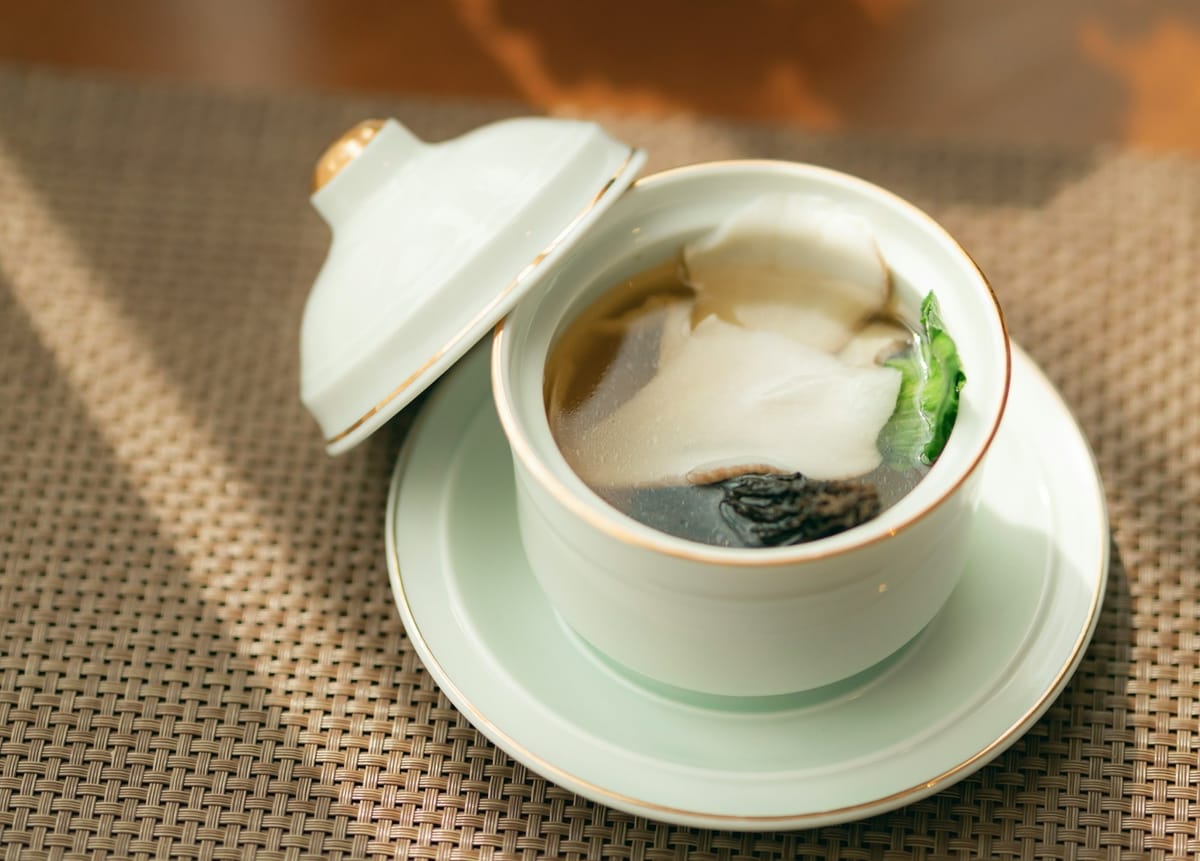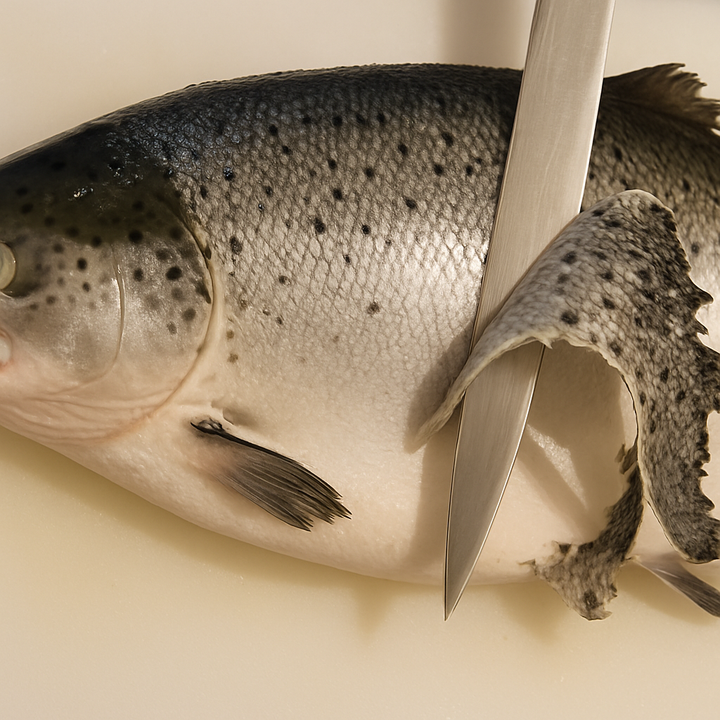Fish Maw Goes Modern: New Trends in Gourmet Cooking
Traditional Chinese delicacy fish maw is finding new life in modern kitchens. Chefs worldwide are exploring its unique texture and adaptability, using innovative techniques to transform this ancient ingredient into contemporary culinary masterpieces.

In the ever-evolving landscape of global cuisine, traditional ingredients are experiencing remarkable transformations.
Among these culinary rebirths, fish maw—the dried swim bladder of large fish like sturgeon—has emerged from its traditional roots to claim a place in contemporary fine dining.
Once primarily featured in Chinese banquet dishes and double-boiled soups, this versatile delicacy is now being reimagined by innovative chefs worldwide who recognize its unique textural properties and nutritional benefits.
From Ancient Tradition to Modern Tables

Fish maw has been treasured in Chinese cuisine for centuries, particularly in Cantonese culinary traditions where it's considered one of the "four delicacies of the sea" alongside abalone, sea cucumber, and shark's fin.
Historically prized for its collagen-rich composition and subtle flavor profile, it was typically prepared through long, slow cooking methods that yielded gelatinous textures in luxurious broths.
Its unique ability to absorb flavors while maintaining its distinctive soft, smooth texture rich in gelatin makes it ideal for enhancing soups and braised preparations.
Fish maw's status as a luxury ingredient is reflected in its pricing structure, with lower grades (Yu Piu) costing around USD 12 per 100g and higher grades (Fa Gau) commanding prices of USD 100 per 100g or more.
Traditionally, it has symbolized wealth and prosperity, making it a centerpiece in special celebrations such as Chinese New Year banquets.
New Cooking Methods Save Time
Traditional preparation of fish maw involves extensive soaking and lengthy cooking times.
Modern chefs, however, have developed accelerated methods that preserve the integrity of the ingredient while adapting it to contemporary kitchen workflows.
Pressure cooking has emerged as a time-efficient approach. This modern technique can achieve under 60 minutes what traditionally took hours, allowing restaurants to incorporate fish maw into service models that wouldn't have been feasible with traditional preparation methods.
This innovation has been particularly valuable for traditionally time-intensive dishes like the Shanghai Fish Maw Borscht Soup, a festive Lunar New Year specialty that previously required hours of simmering to properly integrate the fish maw's collagen with the soup's rich broth.
Eco-Friendly Fish Maw Choices
As fish maw gains popularity in high-end cuisine, sustainability concerns have prompted a significant shift in sourcing practices.
By 2025, lab-grown fish maw has emerged as a key innovation addressing the environmental impact of traditional harvesting, which has contributed to overfishing of species like the Mexican totoaba—sometimes called the "cocaine of the sea" due to its high value.
Companies like Avant Meats in Hong Kong have pioneered cell-based fish maw production, using cells from real fish that are incubated with nutrients and grown on plant-based scaffolding.
This technology directly addresses the crisis of overfishing in Asian waters, where demand for luxury seafood products has pushed some species to the brink of extinction.
The totoaba fish, whose maw has been banned since 1975, has been particularly impacted, with subsequent effects on the critically endangered vaquita porpoise, of which only an estimated 9 remain.
The fish maw market, valued at USD 2.5 billion in 2022 and projected to reach USD 4.8 billion by 2030, reflects growing demand that cannot be sustainably met through traditional means.
Lab-grown alternatives, initially costing around $900 per pound in 2021, have seen significant cost reductions, making them increasingly viable for high-end restaurants.
Projections suggest costs could drop to $14–18 per pound as production scales, aligning with the price point needed for gourmet applications.
Leading restaurants are embracing these sustainable alternatives, maintaining the luxurious experience while addressing environmental concerns.
This shift reflects broader 2025 food trends toward an "omnivore" approach focusing on "less and better" animal-based products with an emphasis on sustainability and quality.
It's All About the Feel: Texture in Food

What makes fish maw particularly valuable in contemporary cuisine is its extraordinary textural properties.
Unlike many ingredients that are prized primarily for flavor, fish maw offers a unique mouthfeel that can't be easily replicated—a quality that lab-grown versions have successfully preserved.
Texture has emerged as a crucial frontier in Western cuisine, particularly as global culinary traditions intermingle.
Asian culinary traditions have long celebrated textural complexity as equal to flavor, and fish maw allows Western chefs to explore this dimension in new ways.
Notable examples in contemporary fine dining include innovative dishes that pair braised short rib with fish maw that has been treated with beef stock.
This approach creates a fascinating dialogue between two different protein textures while maintaining a unified flavor profile. Such preparations exemplify how fish maw can be used not just as an ingredient but as a textural medium.
Old Meets New: Respecting Traditions

ish maw's journey from traditional Chinese delicacy to sustainable luxury ingredient exemplifies a broader culinary evolution.
Today's innovative chefs honor centuries-old preparations while embracing laboratory-grown alternatives that address environmental concerns.
This transformation doesn't replace tradition—instead, it extends fish maw's cultural legacy by ensuring its viability for future generations.
As this ingredient appears on Michelin-starred menus and in fusion establishments worldwide, it demonstrates how modern gastronomy can preserve culinary heritage while responding to contemporary challenges, creating a meaningful dialogue between past wisdom and present innovation.


